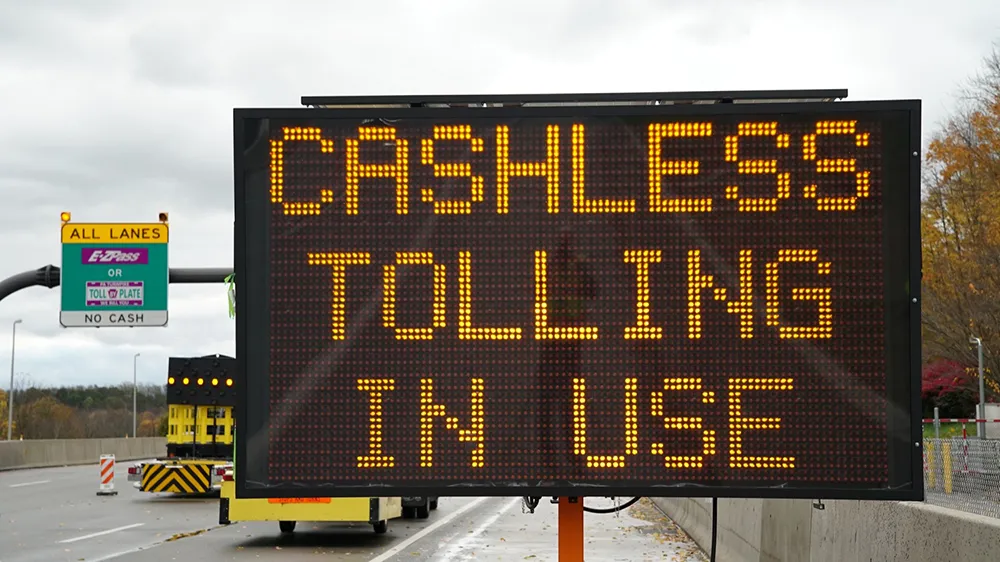
The background to this state-wide programme was an earlier scheme which ran from August 2002 until September 2003, during which KYTC installed some 18,000 modules at various locations. Because this was a new initiative, KYTC tracked all failures of the new LED units extensively. By the middle of 2005, over 18 months later, KYTC had experienced exactly 57 failures, 25 per cent of which were due to a flaw in its specification which called for an inline fuse in the lead wires. KYTC subsequently dropped that part of the specification.
Project:
Kentucky's state-wide replacement of incandescent traffic signals with LED modules
Cost:
$10 million
ROI:
$50 million replacement costs (5:1)
$1.6 million energy savings (82%) per year
Benefits:
Maintenance (replacement costs) cut to 1 per cent
Energy costs cut by 82 per cent This miniscule failure rate (less than 1 per cent) compares with incandescent light units which have to be replaced on average every eight months - or an eye-watering dollar cost of (currently) around $7 million a year! The GELcore LED traffic signals deployed throughout Kentucky have an average life expectancy of 8-10 years and carry a manufacturer's warranty of seven years against failure.
Kentucky's state-wide programme, which began in January 2005, involved retrofitting some 2,500 state-maintained signals, about 1,040 school flashers, 605 beacons and 500 city-maintained signals, in addition to the replacement of around 600 signal heads which were provided by Kentucky DOT - a total of 4,645 signal locations in total for this programme.
The Kentucky Transportation Cabinet is an executive branch agency responsible for overseeing the development and maintenance of a safe, efficient multimodal transportation system throughout the commonwealth.
The Cabinet manages more than 27,000 miles of highways, including roughly 20,500 miles of secondary roads, 3,600 miles of primary roads, and more than 1,400 interstate and parkway miles. The Cabinet also provides direction for 230 licensed airports and heliports and oversees all motor vehicle and driver licencing for more than 3 million drivers in the commonwealth.
The cost for all of the above was $10 million paid for through $6 million down and the balance financed over three to four years. Indeed, Kentucky made the final payment last year
Economic analysis
In responding to questions from ITS International about Kentucky's state-wide programme, Ted Swansegar, Engineering Specialist with the Kentucky Transportation Cabinet, says he has opted for conservative figures.Taking energy savings first, Swansegar says, "From the initial study that was conducted to assess what was being achieved in powering LED units as against incandescent bulbs, most energy bills dropped from about $100 to around $18 on average, which works out at around an 82 per cent drop in energy costs.
"To put a dollar figure on that percentage saving, we estimate it to be around $1.6 million that we spent on utility bills before we installed LED traffic signal heads, based on about six cents per kW. I guess environmental people could put emissions and CO2 savings on that and come up with some kind of justifiable additional financial figure but that is outside my area of expertise."
Maintenance savings
In terms of the high savings achieved on maintenance, Swansegar says, "We are in are fourth year since the retrofit of all incandescent traffic signals throughout the state of Kentucky. In that period we have replaced about 1,000 LED modules, which equates to a failure rate of around 1 per cent. However, most have been replaced under warranty which is for seven years."With the replacement of about 1,000 LED modules, we have only seen about $231,000 dollars spent to replace through maintenance, which is about $231 dollars for each visit. We were usually replacing incandescent bulbs every eight months, whereas now it will be every seven or eight years. This is a huge saving which we estimate to be over $7 million a year, which is the cost for having to visit each of the 4,645 signal location on average every eight months, as against every seven years (warranty) to arrive at the ROI figure of $50 million for maintenance savings."RSS








